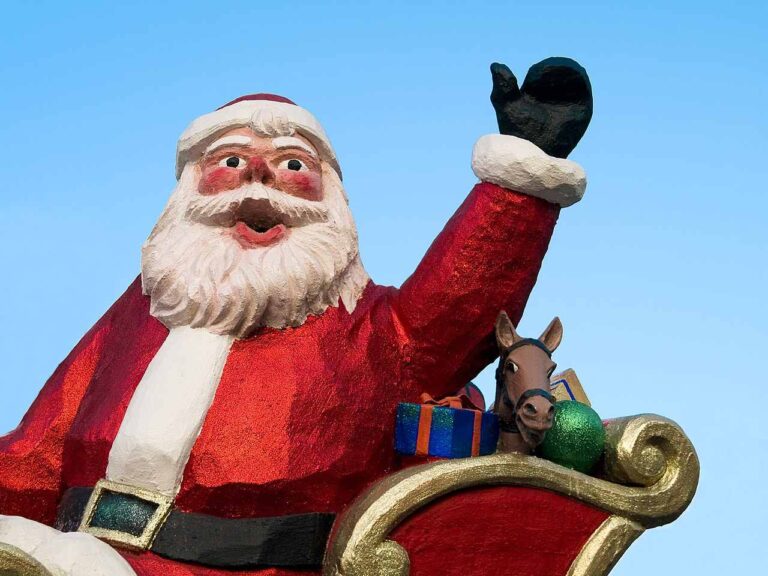Who owns Santa Claus? Setting the record straight

The image of Santa Claus is one of the most recognizable and beloved figures in popular culture, especially at Christmas. But who exactly owns the rights to this jolly old man in the red suit? For decades, Coca-Cola has been associated with Santa Claus, and many believe that the soft drink giant owns the trademark of this iconic figure.
In this article, we will delve into the complex world of trademark law and examine the various claims for the image of Santa Claus. We will explore the history of how Coca-Cola came to be associated with Santa, and whether or not they own the rights to the world acclaimed Father of Christmas. This in-depth review will also examine the larger issue of copyright infringement and the impact it has on our society and culture.
The origin of Santa Claus: separating fact from fiction
The image of Santa Claus, also known as St. Nicholas or Father Christmas, has evolved and has taken on various forms in different cultures. The origin of Santa Claus can be traced back to the 4th century, to the Turkish bishop, St. Nicholas. He was known for his kindness and generosity and for giving gifts to well behaved children. Over time, this tradition of gift-giving spread throughout Europe, eventually making its way to North America and the world at large.
In America, the image of Santa Claus was further popularized by the 1820s poem “A Visit from St. Nicholas” by Clement Clarke Moore, which described Santa as a jolly old man in a red suit with a white beard. This image was later adopted by Coca-Cola in an advertisement in the 1930s and has since become the iconic representation of Santa Claus.
Nonetheless, many other interpretations of Santa Claus exist in different cultures and countries, each with its unique twist on the traditional image. For example, in Scandinavia, Santa Claus is known as “Julemanden” and is depicted as a tall and thin man, while in the Netherlands, he is known as “Sinterklaas” and is accompanied by helpers known as “Zwarte Piet”
Coca-Cola and Santa Claus: a partnership as old as time
Coca-Cola has been associated with Santa Claus for nearly a century, and their partnership has helped to shape the image of Santa Claus as we know it today. In the 1930s, Coca-Cola began using Santa Claus in their advertising campaigns, depicting him as a jolly old man in a red suit with a white beard, a far cry from his original depiction as a thin, serious bishop- who didn’t wear red suits.
The partnership between Coca-Cola and Santa Claus was an instant success, and their iconic ads featuring Santa Claus helped solidify the image of Santa Claus as a jolly, happy, and rotund figure. Over the years, Coca-Cola has continued to use Santa Claus in their advertising campaigns, and the image of Santa Claus in a red suit with a white beard has become synonymous with the soft drink giant.
However, Coca-Cola’s association with Santa Claus has also led to confusion about who exactly owns the rights to the image of Santa Claus. While Coca-Cola does not own the rights to Santa Claus, they have trademarked various aspects of their Santa Claus advertising, such as the image of Santa Claus in a red suit drinking a bottle of Coca-Cola.
The legal battle for Santa Claus: Claims, counter-claims, and confusions
The image of Santa Claus has become one of the most recognizable figures in popular culture, and as a result, it has become the subject of numerous legal battles over the years. Claims to the rights of Santa Claus have been made by various organizations and individuals, leading to a complex web of legal battles and disputes.
One of the key issues surrounding the rights to Santa Claus is the question of whether or not Santa can be trademarked. While some argue that Santa Claus is a public figure and therefore cannot be trademarked, others argue that the various interpretations of Santa Claus, such as the Coca-Cola Santa Claus, can be trademarked.
Another issue is the question of who owns the rights to the various images and depictions of Santa Claus. While Coca-Cola has trademarked their specific depiction of Santa Claus, they do not own the rights to Santa Claus as a whole. This has led to numerous disputes and legal battles over the years, as different organizations and individuals claim ownership over various aspects of the Santa Claus image.
The Impact of Copyright Infringement on Society and Culture
Copyright infringement has a significant impact on both society and culture, as it raises important questions about the ownership of cultural icons and the rights of creators. In the case of Santa Claus, the disputes over the rights to this beloved figure have resulted in confusion and uncertainty, and have had a tangible impact on the way that Santa Claus is portrayed and marketed.
For example, disputes over the rights to Santa Claus have resulted in limitations on the use of the Santa Claus’ image, which can restrict the ability of artists and creators to produce new and innovative depictions of this cultural icon. Additionally, disputes over the rights to Santa Claus can also result in significant legal costs, which can divert resources away from other important cultural projects and initiatives.
Furthermore, the impact of copyright infringement extends beyond the realm of legal disputes and extends into the broader cultural sphere. By restricting the use and representation of cultural icons like Santa Claus, copyright infringement can limit the ability of artists, creators, and individuals to express themselves and engage with the cultural artefacts that shape our society.
Protecting our cultural heritage and intellectual property
The relationship between Coca-Cola and Santa Claus, and the legal battles over the rights to this iconic figure, highlight the complex and nuanced nature of intellectual property law and its impact on our cultural heritage. While Coca-Cola does not own the rights to Santa Claus as a whole, its partnership with Santa Claus has helped to shape the image of Santa Claus as we know it today.
At the same time, the legal battles over the rights to Santa Claus raise important questions about the ownership of cultural icons, and the impact of intellectual property law on our ability to express ourselves and engage with the cultural artefacts that shape our society. By protecting our cultural heritage and intellectual property, we can ensure that future generations can engage with the cultural icons that have shaped our world.
Conclusion
The relationship between Coca-Cola and Santa Claus provides a fascinating case study into the complex and interrelated worlds of advertising, branding, and intellectual property law.
By examining this relationship, we can gain a greater appreciation for the role that these forces play in shaping our cultural landscape and the impact that they have on our society and culture.
Can Santa Claus be patented?
No, patents are mostly for inventions and intellectual creations from a person.
Does Coca-Cola own Santa Claus?
No, despite Coca-Cola being responsible for creating the present version of Santa used all over the world, Santa is a public figure that no one can lay ownership to.
Don't miss a thing. Follow us on Telegram and Follow us on WhatsApp. If you love videos then also Subscribe to our YouTube Channel. We are on Twitter as MakeMoneyDotNG.





